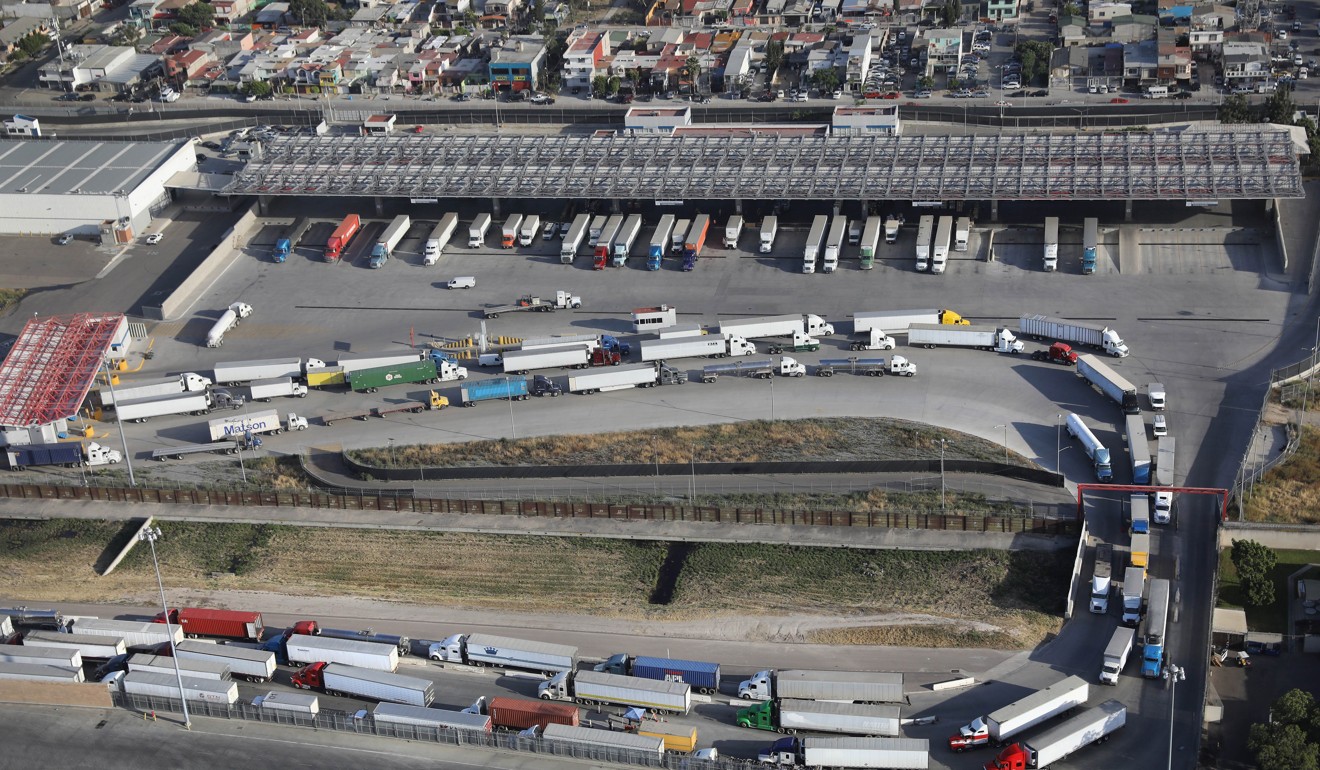
Nafta battleground will set the tone for coming trade talks with China
‘Trump has set out to fight a long list of bilateral trade battles – beginning with Canada and Mexico in Nafta, then moving on to China, and probably then Japan and Germany’
With characteristic understatement, Donald Trump has always been clear about the merits of the North American Free Trade Agreement that has since 1994 bound the US, Canada and Mexico into one of the world’s largest trading blocks: “Nafta is the worst trade deal maybe ever signed anywhere.”
Let’s not waste time with fact checking. We know what the result will be, and it will make no difference to the Trump rhetoric. The important point is that he won lots of votes in last November’s presidential election on the back of swingeing attacks on unfair trade deals, and he is under acute pressure to act on his words.
Abandoning the 12-country Trans-Pacific Partnership (TPP) was a first sweeping assault on US trade relationships, and Nafta came quickly into his sights once the TPP had been unceremoniously consigned to the rubbish bin.

In certain respects, therefore, last week’s White House decision to begin negotiations on a new and upgraded Nafta on August 16 must come as good news. Six months ago, the betting odds were that he would unravel Nafta too. The fact that he has moderated from that position is a comfort of sorts.
Canada’s ambassador to Washington David MacNaughton has put the best possible spin on things, applauding the attempt to modernise Nafta into a “progressive trade agreement”: “We have to find ways where President Trump can claim victory without it being a loss to Canada or Mexico.”
I suspect nevertheless that he and his Mexican counterparts can take little comfort from the US’s Nafta “objectives report”, released last week. Robert Lighthizer, the US Trade Representative and author of the report, was clear: “Since the [Nafta] deal came into force in 1994, trade deficits have exploded, thousands of factories have closed, and millions of Americans have found themselves stranded.”
The fact that trade between the US, Canada and Mexico has tripled to more than US$1 trillion, that at least 14 million jobs today depend directly on trade with Canada and Mexico, that US GDP per capita has doubled, and that meticulous Congressional research says there have been no mass job losses, counts for little.
In one way, Lighthizer’s comment is absolutely true: since 1994, it is quite accurate that US trade deficits have exploded, thousands of factories have closed, and US workers have lost jobs. No need for alternative facts here. The problem is that all available evidence says the deficits have more to do with US readiness to spend and reluctance to save, and that factory closures and job losses have more to do with technological change and automation than with trade. The Trump team will not be the first to confuse coincidence with cause, especially since the tactic of targeting alleged trade injustices has delivered such generous electoral returns.

Whatever the absence of any objective merit in Trumps claim that Nafta was a disaster for the US, the course is now set reasonably clear. Abandoning pesky plurilateral trade negotiations, Trump has set out to fight a long list of bilateral trade battles – beginning with Canada and Mexico in Nafta, then moving on to China, and probably then Japan and Germany.
The unifying theme here is that the US runs trade deficits with nine of its 10 top trading partners. Last year this ran to a whopping overall trade deficit of US$728 billion on total trade amounting to US$3.8 trillion. These deficits ranged from US$347 billion with China and US$146 billion with the European Union down to US$69 billion with Japan, US$64 billion with Germany, and US$63 billion with Mexico. To Trump, this is all the fault of exploitative foreign trading partners, ill-placed generosity on the part of the liberal and open US economy, and currency manipulation – and it must stop.
The Nafta negotiating agenda unveiled last week will in many areas provide a template for other negotiations yet to begin, even though the US’s arguments with Mexico and Canada are in many ways very different:
•US trade deficits have to be cut, ideally by greater openness to US exports
•VAT and GST tax systems that are deemed to discriminate against US exporters must be tackled – hence his focus on a “border adjustment tax”
•Rules of origin in Nafta have to be tightened, in particular in the auto industry, to ensure that a bigger share of the value of production goes to US companies
•Barriers to US farm exports, in particular dairy products, butter and cheese, must fall
•Barriers to US lumber exports must be reduced
Since the US trade deficit with Canada is rather small, the trade argument is likely to be waged mainly with Mexico. So too will the argument over rules of origin in the auto industry.
US Commerce Secretary Wilbur Ross was brutally frank last month about how a better balance could be achieved with Mexico: “Some of the agricultural products they [Mexico] buy come from Brazil. Well, they could just as well give us a better market share than we have now.” Hard to get more brazenly mercantilist than that. Tough for Mexican families who might as a result have to pay more for their food.
There is a sense that negotiations with Canada will be easier – not just because trade is much better balanced, but also because Canada and the US share common ground on many issues that have emerged over the 23 years since the Nafta deal was forged. This in particular applies to issues like IT, data flows, e-commerce and trade facilitation.
The two also share common cause on global challenges like steel overcapacity, exchange rate movements, intellectual property protection, treatment of state-owned enterprises, and labour and environmental rules. In many of these areas, negotiators will be keen directly to “cut and paste” wording from the TPP agreement – though the US will need to be very discrete about this, given the harsh words Trump has had for the TPP.
Even though a good case can be made that Nafta is overdue for an update, there must be trepidation over the details of the US negotiating agenda. The ugly side of Trump’s bias towards bilateralism is also likely to be clear: 84 per cent of Mexico’s trade is with the US, and for Canada it is 70 per cent. Such heavy reliance on the US economy, and the Nafta framework that has shaped it over the past 23 years, will be severe test of their negotiating mettle.
David Dodwell researches and writes about global, regional and Hong Kong challenges from a Hong Kong point of view

